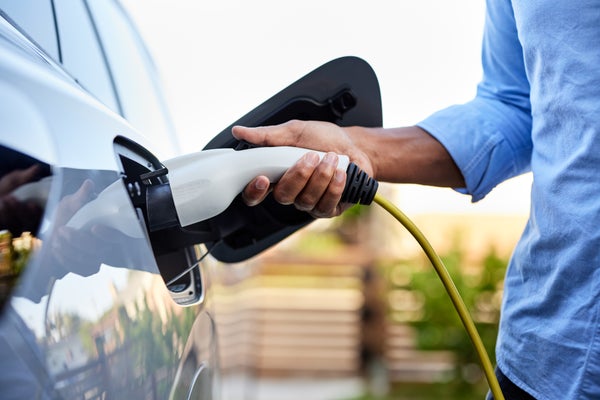The Future of Driving in the U.S. Is Electric—Sort Of
The EPA’s final rule on car emissions will result in far fewer battery-powered electric vehicles than what the agency envisioned last year
Cavan Images/Getty Images
CLIMATEWIRE | The Biden administration’s plan to electrify the car industry will get a little help from gasoline engines.
EPA’s original proposal to control greenhouse gas emissions from light-duty vehicles estimated that 67 percent of new passenger car sales would need to be electric in eight years.
The final version released Wednesday still leans on fully electric vehicles, but it makes room for plug-in hybrids and other types of cars that run on gas. EPA estimates that 56 percent of cars and light trucks will be fully electric by 2032 and 13 percent will be plug-in hybrids — which use a combination of batteries and gas. Other scenarios outlined by the agency show as few as 35 percent of sales being fully electric cars, along with 36 percent being plug-in hybrids. (The remainder would be internal combustion vehicles or hybrids without a plug-in option).
On supporting science journalism
If you’re enjoying this article, consider supporting our award-winning journalism by subscribing. By purchasing a subscription you are helping to ensure the future of impactful stories about the discoveries and ideas shaping our world today.
Carmakers and EPA Administrator Michael Regan hailed the change as a practical move that will lead to drastic cuts in climate-warming pollution, while giving the industry the flexibility it needs to adapt. And they say it would protect the rule against political and legal challenges, which have already been set in motion.
“When you look at the total picture, we are not sacrificing environmental integrity,” Regan said Wednesday in announcing the rule. “We believe it makes a stronger rule, a more durable rule.”
It’s also a tacit acknowledgment that a lot of car buyers —…
Read the full article here







